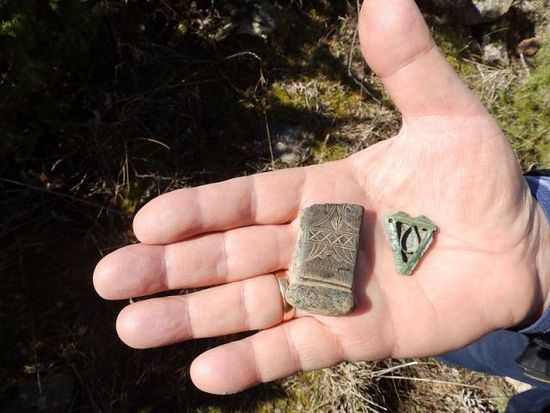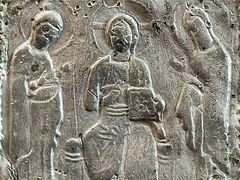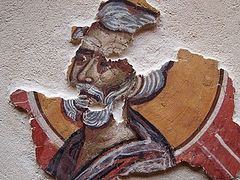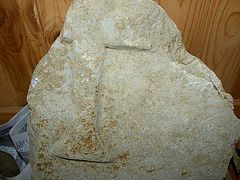Source: Archaeology in Bulgaria
March 7, 2016
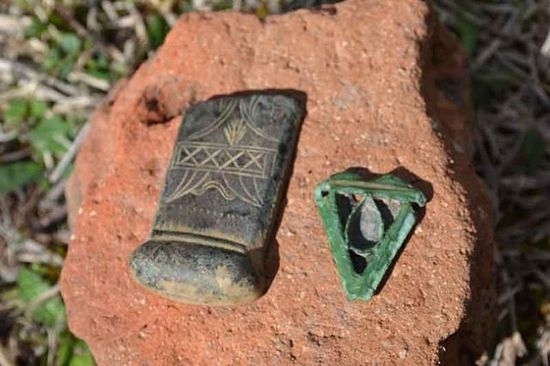 A reliquary (right) and a fragment from a decorated bronze cross from the 11th-12th century AD have been found amid the ruins of a medieval monastery near Dobromirtsi, Kirkovo Municipality, in the Rhodope Mountains in Southern Bulgaria. Photo: 24 Chasa daily
A reliquary (right) and a fragment from a decorated bronze cross from the 11th-12th century AD have been found amid the ruins of a medieval monastery near Dobromirtsi, Kirkovo Municipality, in the Rhodope Mountains in Southern Bulgaria. Photo: 24 Chasa daily
A medieval reliquary and a piece of a bronze cross have been found at the ruins of a monastery from the 11th-12thcentury located near the town of Dobromirtsi in Bulgaria’s southernmost municipality Kirkovo.
The medieval artifacts have been found during the preliminary exploration of the monastery site by archaeologist Prof. Nikolay Ovcharov from the National Institute and Museum of Archaeology in Sofia, reports the 24 Chasa daily.
The reliquary probably contained relics of a Christian saint during the Middle Ages but has been found empty.
The other artifact is part of the arm of a large decorated bronze cross featuring the image of the Holy Mother of God (Virgin Mary) “Orans“ (Oranta – “Praying, Panagia, Lady of the Sign” – a type of Orthodox icon of the Virgin Mary with raised arms in ornate position).
According to Ovcharov, both the reliquary and the cross fragment date back to the 11th-12th century AD.
Similar Christian artifacts discovered in Bulgaria recently (in 2015) include:
a lead cross reliquary found in Missionis (Krum’s Fortress) near Targovishte in Northern Bulgaria;
a lead tube reliquary with ashes from the grave of John the Apostle in Ephesus found in Burgos (Poros) near Burgas on the Black Sea coast;
a large bronze procession cross found in Parthicopolis near Sandanski in Southwest Bulgaria;
a bronze procession cross found in the Kastritsi Fortress near Varna on the Black Sea coast;
a silver cross found in the Trapesitsa Hill Fortress in Veliko Tarnovo in Northern Bulgaria.
Kirkovo Municipality (Bulgaria’s southernmost municipality bordering Greece, and located some 20 km north of the Aegean coast) and the archaeologist announced recently that they were going to restart the archaeological excavations of the medieval Christian monastery near Dobroslavtsi in search of the grave of St. Patriarch Evtimiy (Euthymius) of Tarnovo (served 1375-1394), the last head of the Bulgarian Orthodox Church in the Second Bulgarian Empire (1185-1396).
Ovcharov, who has been excavating the ancient and medieval rock city of Perperikon (Perperik), a major archaeological site, and the St. John the Forerunner Monastery, both of which are located in the Eastern Rhodope Mountains, in the same region as Kirkovo, believes he might find there traces of the presence of the last head of the Bulgarian Orthodox Church in the Second Bulgarian Empire, Patriarch Evtimiy.
St. Patriarch Evtimiy (Euthymius) of Tarnovo (ca. 1325 – ca. 1402-1404) was one of the most important figures of the Second Bulgarian Empire and in the Eastern Orthodox world during his time. Even before becoming the Patriarch, he was the founder of the Tarnovo Literary School, and carried out a language reform of Old Bulgarian which also influenced the literary traditions in the Russian principalities, Serbia, Wallachia, and Moldova.
A supporter of hesychasm, a mystical prayer tradition in the Eastern Orthodox Church, today Evtimiy might be the most well-known of the medieval Bulgarian patriarchs, partly because of his role in defending the capital Tarnovgrad (today’s Veliko Tarnovo) against the invading Ottoman Turks.
In the absence of the secular ruler, Tsar Ivan Shishman (r. 1371-1395), the Patriarch commanded the heroic defenses of Tarnovgrad during a three-month siege in the spring and summer of 1393.
After the Ottomans conquered the city, slaughtered much of the population, and executed in public its most important boyars (nobles), they exiled Patriarch Evtimiy somewhere in today’s region of Thrace. It has been assumed that he died in exile in the Bachkovo Monastery, today in Southern Bulgaria, but this hypothesis remains unproven.
The monastery near Dobromirtsi, Kirkovo Municipality, was excavated for three seasons back in the 1960s by Bulgarian archaeologist Ivan Balkanski, who also discovered the rock city of Perperikon. However, the results from his research were never published, and no excavations of the monastery have been carried out ever since.
In 1928, local historian Nikola Ivanov was told that during the construction of a mosque (this Bulgarian region has large Muslim ethnic Turkish population) in the nearby town of Benkovski, locals discovered the grave of a senior Christian clergyman who had a miter on his head and a bishop’s attire. The remains of clergyman and the funeral inventory were taken by a rich Turkish man, meaning the discovery might have been made before 1912 when today’s Kirkovo Municipality was liberated from the Ottoman Empire, and became part of Bulgaria.
Ovcharov says there are still stories that the miter is being carried up and down the region of the Rhodope Mountains because of its alleged healing qualities. He reminds that according to Gregory Tsamblak (a disciple of Evtimiy, a Bulgarian writer and cleric, metropolitan of Kiev in 1413-1420 – editor’s note), [Patriarch Evtimiy]was exiled in Macedonia, which in the Middle Ages was a name denoting the territory between Thessaloniki and Adrianople, including the Southern Rhodope Mountains.
Back in 1925, Nikola Ivanov recorded a local legend saying that after the fall of the Bulgarian capital Tarnovgrad (Veliko Tarnovo), Patriarch Evtimiy was brought to today’s town of Benkovski, Kirkovo Municipality, which was part of convent belonging to Bachkovo Monastery; he allegedly served and died there, and was buried in the altar of the local church.
The archaeological excavations of the medieval monastery near Dobromirtsi, Kirkovo Municipality, will be held in May-June 2016, and will be funded by the local authorities with BGN 50,000 (app. EUR 25,000).
In the recent months, local media have reported that the medieval monastery to be excavated is located in an area known as Kliseto, which is dotted with pits dug up by looting treasure hunters.
The walls of the church of the medieval monastery are said to be standing at a height of 1.5 meters, and the ruins are covered with vegetation. Stone and ceramic fragments can be found lying around the place.
However, the site of the monastery has just been raided anew by treasure hunters. Archaeologist Nikolay Ovcharov has identified at least two fresh pits dug up by the looters near the foundations of the surviving church walls.
“When an [archaeological site] has been abandoned, it often falls prey to treasure hunters," he comments.
As this treasure hunting raid comes just a couple of months before the start of the announced excavations, Bulgarian media have commented that the looters have once again beaten the archaeologists to the respective site.
Unfortunately, another of the intriguing archaeological landmarks in Kirkovo Municipality, an Ancient Roman arch bridge near the town of Drangovo, has recently been completely destroyed by looting treasure hunters.
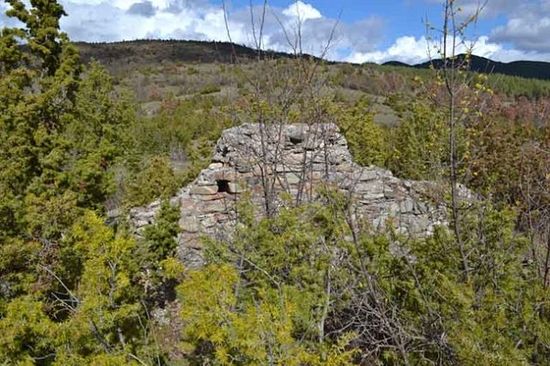 Part of the surviving walls of the medieval Christian monastery near Bulgaria’s Dobromirtsi. Photo: 24 Chasa daily
Part of the surviving walls of the medieval Christian monastery near Bulgaria’s Dobromirtsi. Photo: 24 Chasa daily
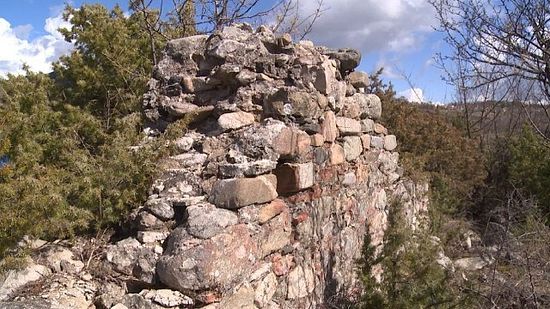 Part of the surviving walls of the medieval Christian monastery near Bulgaria’s Dobromirtsi. Photo: bTV
Part of the surviving walls of the medieval Christian monastery near Bulgaria’s Dobromirtsi. Photo: bTV
Background Infonotes:
Treasure hunting and illegal trafficking of antiques have been rampant in Bulgaria after the collapse of the communist regime in 1989 (and allegedly before that). Estimates vary but some consider this the second most profitable activity for the Bulgarian mafia after drug trafficking. One recent estimate suggests its annual turnover amounts to BGN 500 million (app. EUR 260 million), and estimates of the number of those involved range from about 5 000 to 200 000 – 300 000, the vast majority of whom are impoverished low-level diggers.

